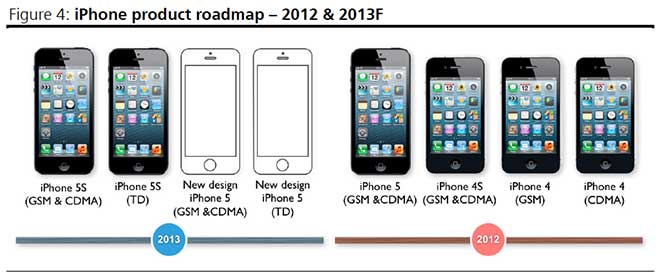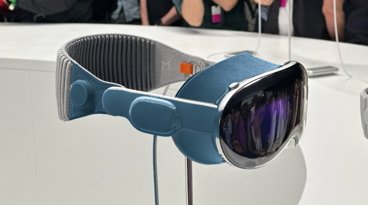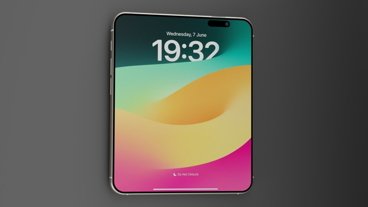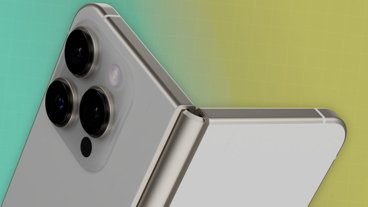Analyst Ming-Chi Kuo of KGI Securities, who has a notable track record in predicting Apple hardware launches, forecasts the Cupertino company will announce a successor to the iPhone 5 alongside a low-cost handset model in June ahead of a rollout in July.
Reiterating his earlier predictions, the well-connected analyst believes Apple will introduce two distinct iPhone models, a flagship iPhone 5S and less expensive version made out of fiberglass and plastic. Beyond housing materials, the two handsets will be further differentiated by the use of high-tech internals.
Kuo predicts that the iPhone 5S will leverage a number of next-generation Apple technologies, including a faster A7 SoC, a "Smart Flash" that uses white or yellow LEDs to ensure high-quality photos, and a fingerprint security chip sourced from the company's acquisition of AuthenTec. The 5S will recycle the same thin aluminum chassis seen on the iPhone 5, but may include a slightly larger 1600mAh battery.
As for the low-cost model, Kuo thinks that the unit will be slightly heavier than its aluminum-bodied counterpart, and will possibly see a hybrid casing made out of fiberglass and plastic. LTE data will come standard on the device, as the cost of such a radio chipset is negligible and can only serve to enhance user experience as Apple integrates more heavily with iCloud. Because the handset is likely to be more expensive than other mid-tier smartphones, the lack of LTE support would make it difficult to negotiate subsidies with mobile carriers. Kuo calculates that subsidies could cover the entire device cost with a two-year contract, making the low-cost iPhone an attractive option for developing smartphone markets like China.
Kuo is one of the first analysts to indicate that Apple will ship FDD-based handsets on a different schedule than TDD iterations, mostly due to the fact that the upcoming iPhones will be the company's first products to use the technology.
Interestingly, Kuo told AppleInsider that Apple is unlikely to use the recently announced Qualcomm RF360 frontside RF chipset, which promises LTE support of all 2G, 3G, 4G LTE and LTE Advanced technologies, including those used by China Mobile.
"RF360's customers are OEMs who have no capability to design RF front end and PA by themselves," he said."RF360's customers are OEMs who have no capability to design RF front end and PA by themselves." - KGI Analyst Ming-Chi Kuo.
Kuo does note, however, that the new iPhone models will for the first time address China Mobile's TDD networks, which cover TD-SCDMA and TD-DLTE, but compatible versions aren't expected until September due to testing and network design processes. As the world's largest carrier by subscribers, China Mobile's TDD iPhone could account for 28 percent of iPhone shipments for the second half of 2013, despite seeing a later launch compared to worldwide LTE versions.
During a recent trip to China, Apple CEO Tim Cook reportedly met with the Chinese telecom, though the meeting's discussions remain confidential.
With component suppliers expected to start mass shipments in May, the two iPhone models could be announced in June ahead of a July rollout. Kuo expects shipments of the iPhone 5S and low-cost iPhone to come in at nearly 40 million units and over 53 million units for the second half of the year, respectively. He notes that Apple doesn't want to repeat last year's delayed iPhone 5 launch, which gave competitors like Samsung room to crowd the market.
Broken down by quarter, the flagship iPhone 5S will ship more than 14 million and 21.5 million units over the third and fourth quarters, while the less expensive iteration will move above 19 million and 34 million units during the same period. Added to Apple's existing iPhone lineup, overall shipments are forecast to rise 83 percent from the first half of 2013 to reach 110 million units.
 Mikey Campbell
Mikey Campbell

-m.jpg)






 Andrew O'Hara
Andrew O'Hara
 Wesley Hilliard
Wesley Hilliard

 Malcolm Owen
Malcolm Owen
 Marko Zivkovic
Marko Zivkovic

 Chip Loder
Chip Loder
 Christine McKee
Christine McKee




-m.jpg)




51 Comments
How credible is this analyst. History?
LTE standard! iPhone 5S and the S is for "Special"
Ming-Chi Kuo is very credible!
Plastic, fiberglass, whatever.. If it happens perhaps the target market is gov, military and corporate. Function and cost over form, right?
He correctly predicted G/F2 screens for the iPad mini.